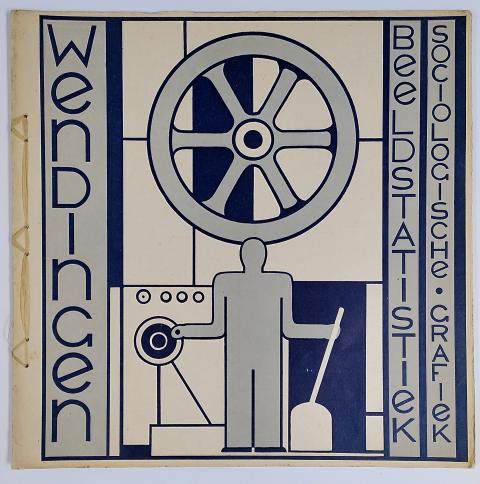Pictoral Statistics
Wendingen was the name of an architecture and art magazine published from 1918 to 1933 with the aim of raising the aesthetic quality of architecture but also as a source of inspiration for artists and architects. The magazine created a furor with its thoughtful design, in a striking, square format. Attention was also paid to applied art, such as in issue 9 from 1930, which was devoted to pictorial statistics, i.e., sociological graphics. The design is by Peter Alma, who previously worked for the Institute for Pictoral Statistics in Vienna and was involved with Isostat, the Russian Institute for pictoral statistics in Moscow and Kharkov.

The journal was donated to the university by one of Cobbenhagen's friends, with a reference to the importance of statistics in the education in Tilburg. The subject—not liked by everyone—was taught from the outset, by Dr. Jan de Quay (Prime Minister of our country from 1959-1963) who had been appointed lector (today it would be called assistant professor) of the course Psychotechnics of Business. Statistics. Wendingen’s front cover refers to the period of industrialization and mechanization, during which questions arose about the suitability of people for new professions.
The journal Wendingen on image statistics and sociological graphics (pictured left)
The first lecturer to treat statistics as an independent discipline was Jan Dalmulder (1910-1992), who received his PhD with the thesis On Econometrics, some Suggestions concerning the method of Econometrics and Its Application to Studies Regarding the Influence of Rationalization on Employment in the USA. Dalmulder was appointed lector in 1940 and became full professor in 1963. He is (with full professors Piet Verheyen, Max Euwe, and Koos Kriens) the founder of the Econometrics study program at Tilburg and has great merits as a stimulator of mathematical-economic research. “Meten is weten” (Measuring is the key to knowledge) was the title of the collection of essays on the occasion of his silver jubilee. He was Rector Magnificus in the academic year 1956-1957.
More about history and academic heritage
The Tilburg University academic heritage is a very diverse set of archives, visual materials, collections, devices, recorded stories, et cetera that relate to the history of the university.